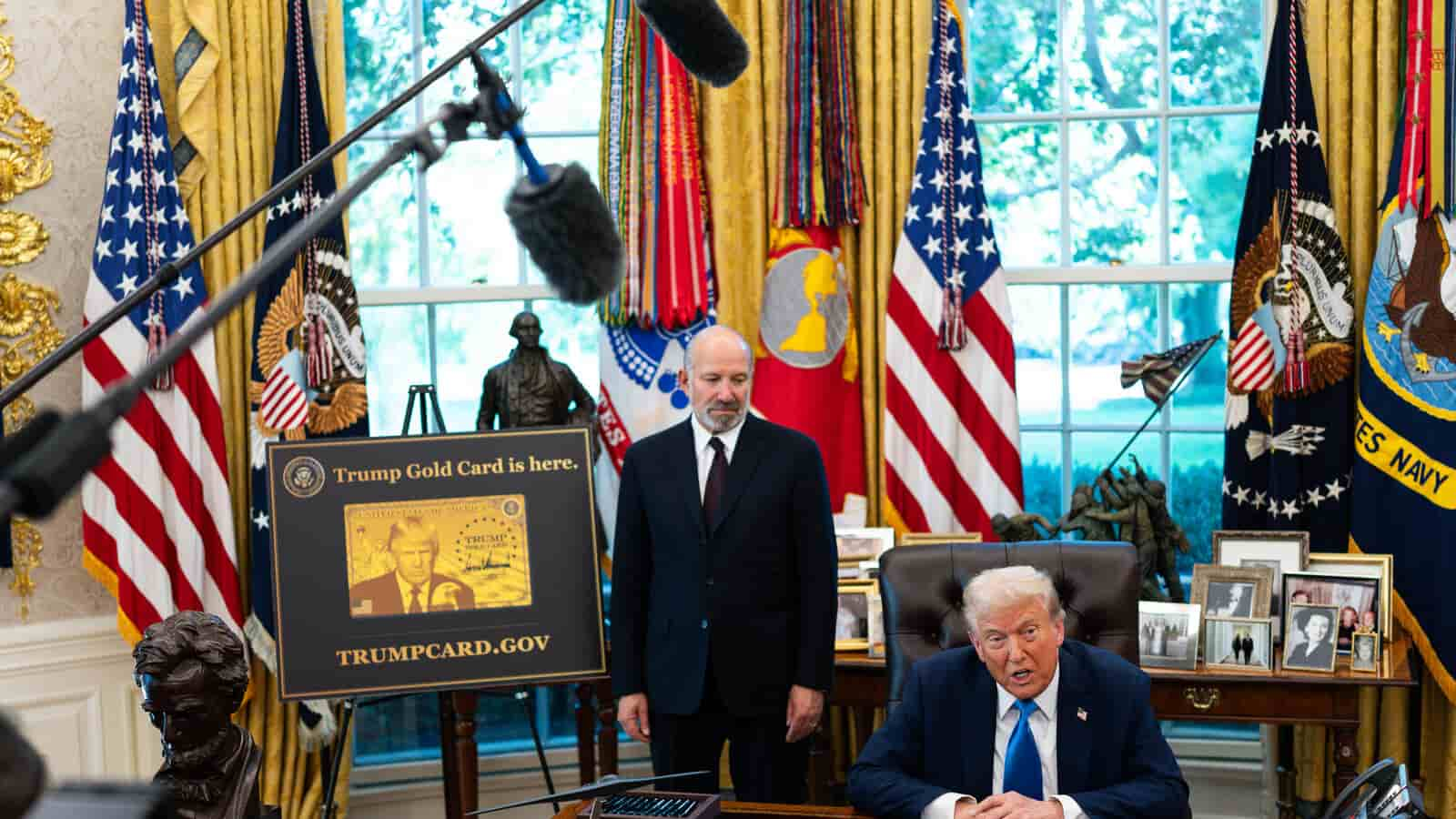The US government has recently made it more difficult to enter the country, especially for those seeking employment in the US. Indian tech workers and students are now under constant concern. The Trump administration announced a $100,000 one-time fee for new H-1B visa applications as part of their immigration policy (effective September 19, 2025). The fee is a whopping $100,000, and so is the fear. And so is also confusion about the policy since it took effect at midnight on September 21, 2025. Are those already working in the US at risk? Should prospective applicants be worried, too? Learn more.

Who Has to Pay the $100,000?
The reasoning given by the Trump administration for the policy change: the H-1B system was being “abused” and was a “national security threat.” Here’s the breakdown:
- New H-1B applicants outside the US should pay the $100,000 (which is INR 88,29,047.57) fee if they want to enter the US. This was $2,000 to $5,000 (INR 1,76,579.20 – INR 441448.00) before this policy came into effect. ✅
- Current H-1B visa holders in the US don’t have to pay the fee. ❌
- H-1B holders extending or transferring visas inside the US are also exempted from the policy. ❌
- F-1 students converting their visas to H-1B inside the US are also exempted. ❌
- F-1 students outside the US applying for H-1B (through the upcoming February lottery or later) will have to pay the fee. ✅
- Also, the government will waive the fee for foreigners working in the “national interest” job roles, for instance, healthcare workers. ❌
- But so far, there is no clear exemption list that has been published officially.
Travel Gray Area
- Let’s say you have a valid H-1B visa and travel abroad. Do you have to pay $100,000 to re-enter the US?
- No, says the White House. However, the lawyers say that the wording of the White House is confusing on the matter.
- While all this is happening, big companies like Amazon and Microsoft have asked their employees not to travel until there’s clarity.
Is It One-Time or Annual?
- The real confusion is here because the early drafts of the policy say annually. On the other hand, the proclamations state that the fee applies each time the person enters the US.
- Example: You have come home (India) for Diwali (or vacations), and while re-entering the country, you’ll be entitled to pay $100,000 again.
- Lawyers on this matter say that no one knows how these fees will be collected. Will it be collected by the state Department, at airports, or through employers? No clarity.
How to Pay the Fee?
- According to the law, the employer is entitled to pay the H-1B petition fees, not the worker themselves.
- It is clear that companies will not pay out of their own pockets; instead, they will indirectly adjust the amount by reducing employees’ salaries, hiring, or sponsorships.
Why the Panic?
- The news certainly caused panic with this confusion. Even now, several with existing H-1B visas think they’ll be asked to pay.
- About 70% of the H-1B Visa holders are Indian, working in the tech sector, and they panicked the most.
- The news broke with different versions, so the companies asked their employees to stay in the US before September 21, 2025. So, they can protect themselves from the new rule.
Impact on Salaries
- The fee of $100,000 is INR 88,29,047.57, which is huge for many Indians staying in the US. It is way above the median annual salary of a fresh H-1B worker.
- If we do the math, it’s over 80% of the average annual salary of all H-1B workers.
- Many companies hire foreigners (especially Indians) for their skills and productivity at work. But policies like these make the visa more intimidating for both workers and companies.
Long-Term Effects
The long-term effects are seemingly negative for the US because:
- The $100,000 is an unaffordable amount for Indians, so that the US will suffer from a loss of skilled STEM workers, especially from India.
- Alternative visas like L-1, O-1 may see a spike, but the rules aren’t flexible for many, so they aren’t sustainable, either.
- Current OPT (Optional Practical Training) students will see less competition in the short term. However, there are fewer opportunities overall.
- The Indian tech talent will move to other countries like Canada, the UK, Australia, and more (boosting their economy), which is a minus for the US.
Legal Challenges
Right now, several Immigration lawyers are preparing lawsuits. This policy is widely compared to the 2017 Travel Ban that was announced as a “security measure,” and it was fought in court.
Important detail that lawyers are underlining:
- A presidential proclamation is not a law.
- But a presidential proclamation does carry authority over federal agencies until the intervention and blockage from the courts. This is what happened in the 2017 Travel Ban.
- In the US, only Congress has the authority to change the H-1B law. Apparently, the policy is framed on the basis of a security issue, so the President has temporary authority only.
General H1B New Policy FAQs
Q1: Do all H-1B holders need to pay?
No, only new applicants outside the US after September 21, 2025, will have to pay $100,000 to enter the US.
Q2: Is it annual?
Not officially. It’s “per entry,” but needs clarification from the White House.
Q3: What about renewals/extensions?
No fee.
Q4: Who pays?
The employer is sponsoring.
Q5: Any exemptions?
It is unclear, but the roles in the “national interest”, like healthcare (like doctors, nurses), may be exempted.
Leave a Reply